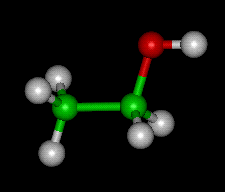This page is about ethanol and disease. To read about the Chemical and Physical properties of ethanol see: The ethanol Molecule
Alcohol is known to raise the risk of no fewer than seven types of cancer. These are mouth, upper throat (pharynx), voice box (laryngeal), esophageal, breast, liver, and bowel cancer.
Genetic Component
Research shows that alcohol use and alcohol-related problems are influenced by individual variations in alcohol metabolism, or the way in which alcohol is broken down and eliminated by the body. Alcohol metabolism is controlled by genetic factors, such as variations in the enzymes that break down alcohol; and environmental factors, such as the amount of alcohol an individual consumes and his or her overall nutrition. Differences in alcohol metabolism may put some people at greater risk for alcohol problems, whereas others may be at least somewhat protected from alcohol’s harmful effects.
Many heavy drinkers do not develop cancer, and some people who drink only moderately do develop alcohol-related cancers. Research suggests that just as some genes may protect individuals against alcoholism, genetics also may determine how vulnerable an individual is to alcohol’s carcinogenic effects (1).
Acetaldehyde role in causing cancer
In our bodies, alcohol (ethanol) is converted into a toxic chemical called acetaldehyde in the liver.
Alcohol is metabolized by several processes or pathways. The most common of these pathways involves two enzymes—alcohol dehydrogenase (ADH) and aldehyde dehydrogenase (ALDH). These enzymes help break apart the alcohol molecule, making it possible to eliminate it from the body. First, ADH metabolizes alcohol to acetaldehyde, a highly toxic substance and known carcinogen (2). Then, in a second step, acetaldehyde is further metabolized down to another, less active byproduct called acetate (1), which then is broken down into water and carbon dioxide for easy elimination (3).Acetylaldehyde can cause cancer by damaging DNA and stopping our cells from repairing this damage. The International Agency for Research on Cancer have classified acetaldehyde formed as a result of drinking alcohol as being a cause of cancer, along with alcohol itself.
Acetaldehyde also causes liver cells to grow faster than normal. These regenerating cells are more likely to pick up changes in their genes that could lead to cancer.
Alcohol’s effect on oestrogen and other hormones
Alcohol can increase the levels of some hormones, such as oestrogen. Hormones act as messengers in the body, giving our cells instructions such as when to divide. Unusually high levels of oestrogen increase the risk of breast cancer.
Ethanol and Liver Disease
Drinking lots of alcohol can damage the cells of the liver, causing a disease called cirrhosis. Cirrhosis can make you more likely to develop liver cancer.
How does Alcohol to its damage to the liver
Most of the alcohol a person drinks is eventually broken down by the liver. However, some products generated during alcohol metabolism (e.g., acetaldehyde) are more toxic than alcohol itself. In addition, a group of metabolic products called free radicals can damage liver cells and promote inflammation, impairing vital functions such as energy production. The body's natural defenses against free radicals (e.g., antioxidants) can be inhibited by alcohol consumption, leading to increased liver damage (4).
References
(1) Seitz, H.K., and Becker, P. Alcohol metabolism and cancer risk. Alcohol Research & Health 30(1):38–47, 2007.
(2) Edenberg, H.J. The genetics of alcohol metabolism: Role of alcohol dehydrogenase and aldehyde dehydrogenase variants. Alcohol Research & Health 30(1):5–13, 2007.
(3) National Institute on Alcohol Abuse and Alcoholism. Alcohol Alert: Alcohol Metabolism.No. 35, PH 371. Bethesda, MD: the Institute, 1997
(4) Nanji, A.A.; Khettry, U.; and Sadrzadeh, S.M.H. Lactobacillus feeding reduces endotoxemia and severity of experimental alcoholic liver (disease). Proceedings of the Society for Experimental Biology and Medicine 205(3):243-247, 1994.
